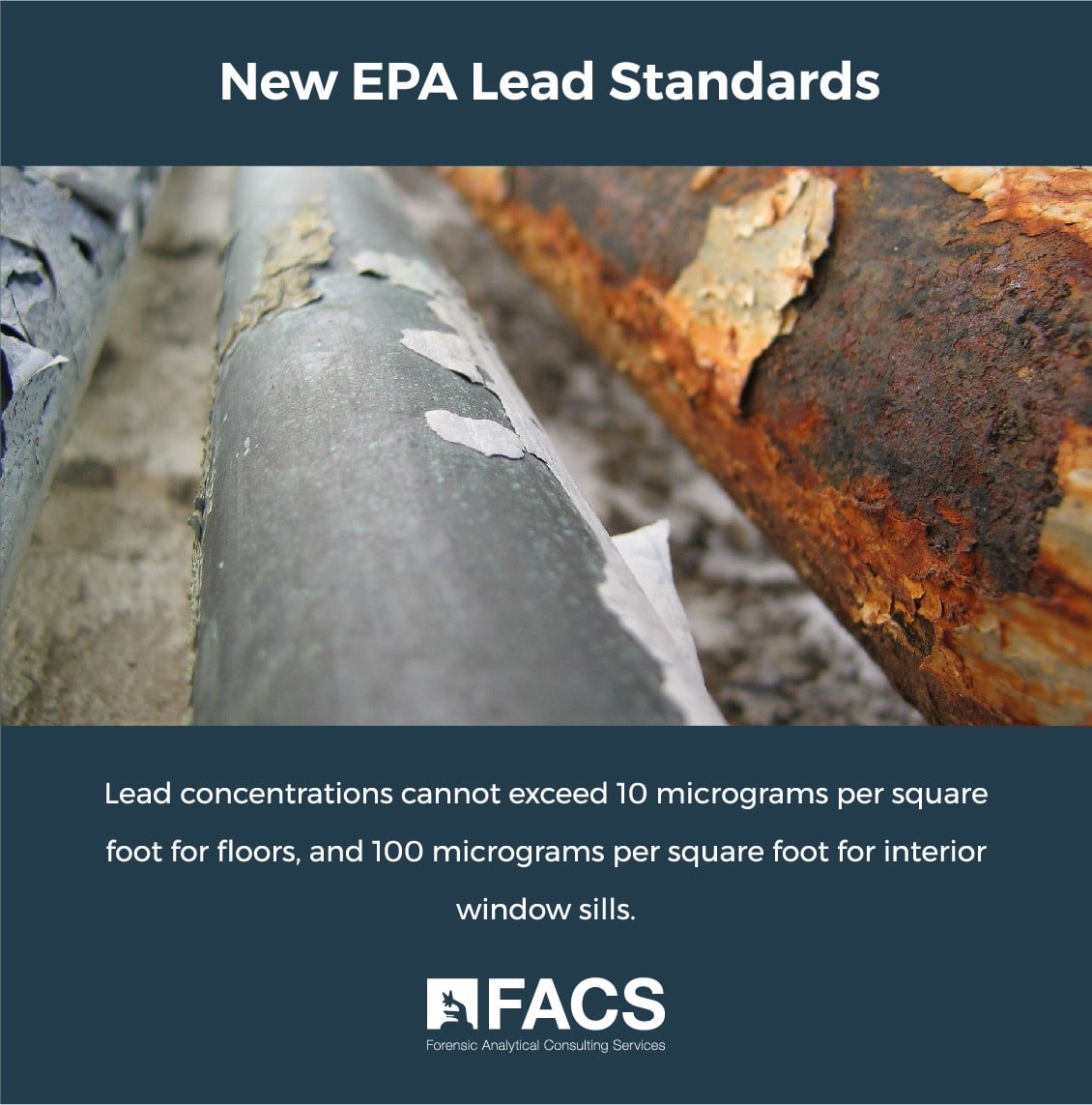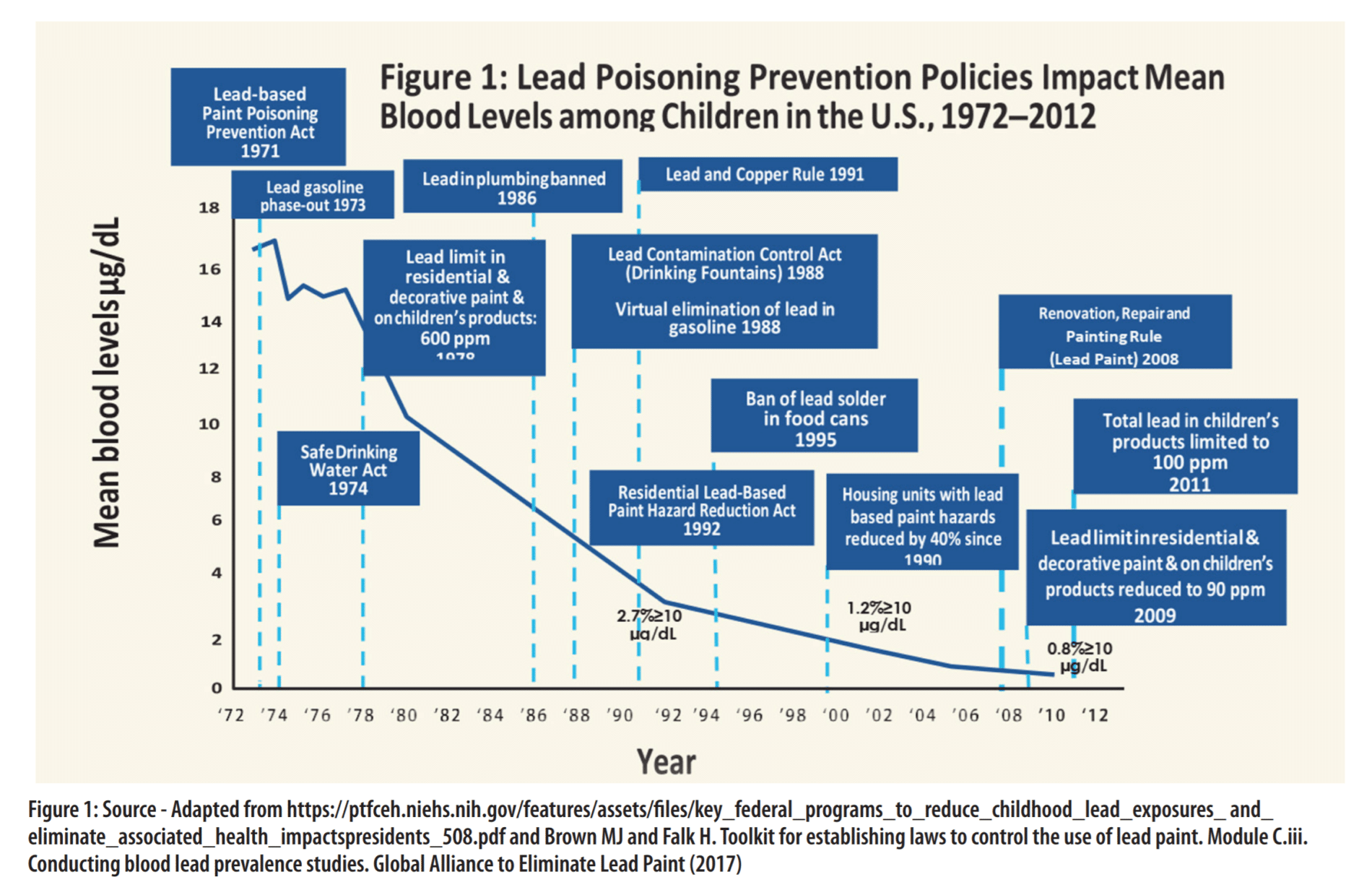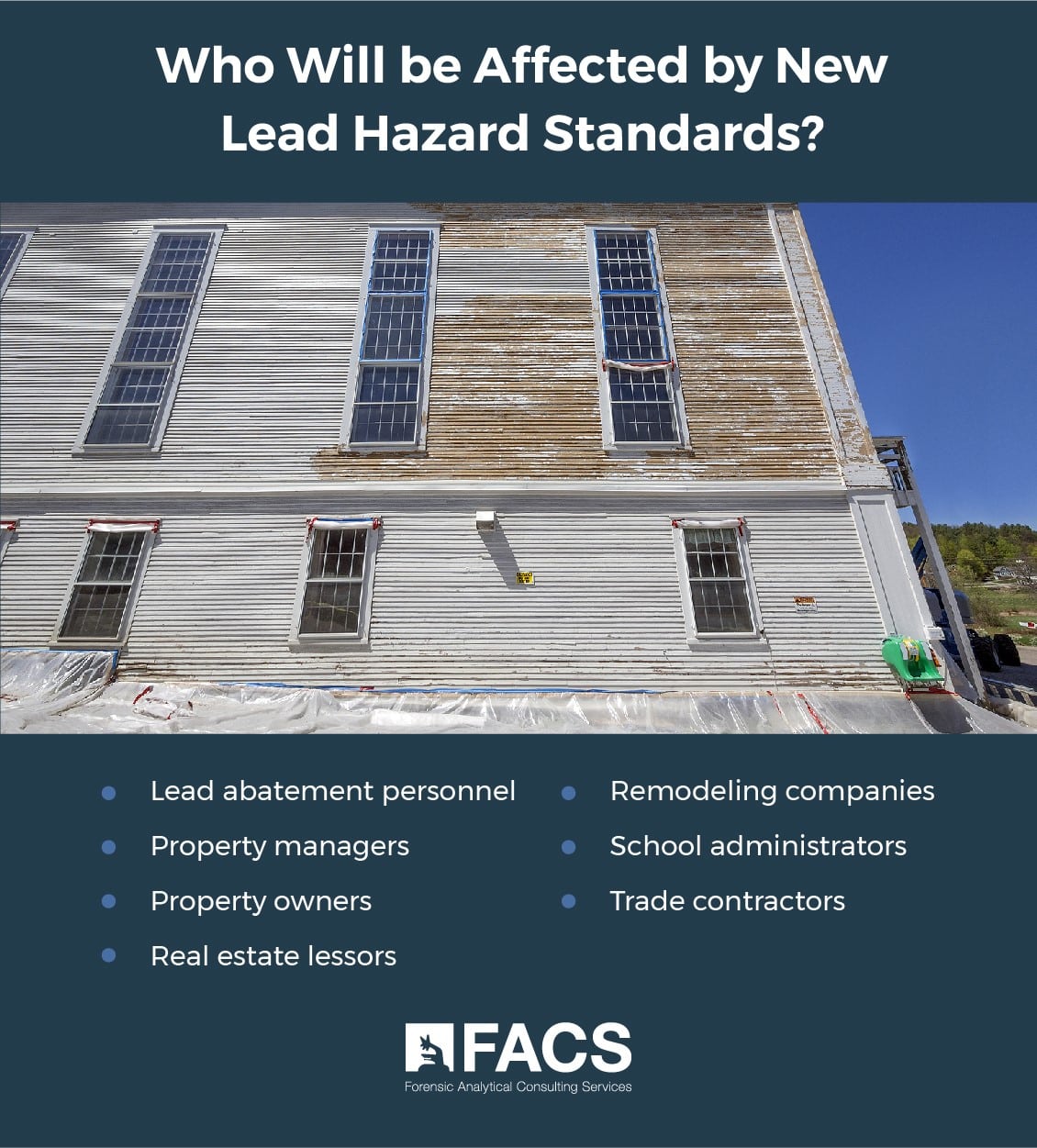Owners and managers of child-occupied buildings constructed prior to 1978 will soon face more stringent lead hazard reduction requirements from the EPA. The move is meant to help lower the risk of childhood lead exposure and curb the various physical disorders lead can cause.

In this article, we’ll provide an FAQ overview of the final rule and cover the steps FACS environmental scientists recommend facilities managers to take in preparation. The reduction of childhood lead exposure is an EPA priority. Managers of HUD facilities and other child-occupied structures should begin planning now to make sure they are in compliance with the new rule before its effective date: January 6, 2020.

What are the new standards?
Under the old rule (created in 2001) lead was considered a hazard when the level of lead in the dust reached or exceeded 40 micrograms per square foot on floors, 250 micrograms per square foot on interior window sills, 400 parts per million in the soil of areas where children play, and 1,200 parts per million for bare soil elsewhere on the property. (Some states or local jurisdictions may have lower standards. For example, in California, the limit for lead in soil that is not a play area is 1000ppm.)
The new rule lowers the standards for floors to 10 micrograms per square foot and to 100 micrograms per square foot for interior window sills. Soil levels remain the same.
Who will be affected by the new lead hazard standards?

Anyone charged with making sure child-occupied facilities are clean, safe, and comply with EPA regulations should pay careful attention to the new requirements and make sure their facilities don’t exceed the numbers given above.
Those potentially affected include (but aren’t limited to) the following:
- Lead abatement personnel
- Property managers
- Property owners
- Real estate lessors
- Remodeling companies
- School administrators
- Trade contractors
Failure to ensure lead levels are sufficiently low will expose building occupants to a potentially catastrophic health hazard and put the business at risk of fines and legal action.
What can I do to make sure my facility complies with lead hazard standards?
The first step in making sure your facility complies with these lead hazard standards is to conduct a lead risk assessment. To find out how to get that assessment scheduled and determine current lead levels, call FACS at (888) 711-9998. You can also get information via our contact form.
Elevated lead dust levels don’t necessarily indicate the need for expensive repairs, remodels, or abatement projects. In many cases, you only need to educate employees on how to identify and clean problem areas. A new set of housekeeping rules can often bring about a significant reduction in lead levels on floors and window sills.
First, get an accurate appraisal of your property’s lead hazard levels. Then, look for ways to either get or keep lead levels within compliance with the new standards. FACS can help or advise you throughout the project.
The New EPA Lead Hazard Reduction Standards: Find Out More
To docket identification number for this action is EPA-HQ-OPPT-2018-0166. You can find out more about the rule on the regulations.gov website. The effective date, once again, is January 6, 2020 – but don’t wait until then. Act now.
Studies show that lead exposure affects people of all ages. Children, though, are especially at risk. Once absorbed into the body, even very low levels of lead can cause cognitive disabilities that last a lifetime.
It is critical that managers and stakeholders of child-occupied structures built before 1978 (when the consumer use of lead-based paints took effect) take note of the new lead hazard levels and make sure their facilities are in compliance.
Not doing so may unnecessarily expose children to a dangerous substance and exact a significant financial and legal impact on those responsible.
Call FACS at (888) 711-9998 for more information.
###
Images Cited:
President’s Task Force on Environmental Health Risks and Safety Risks to ChildrenModule C.iii. Conducting blood lead prevalence studies, EPA, Environmental Protection Agency, December 2018, https://www.epa.gov/sites/production/files/2018-12/documents/fedactionplan_lead_final.pdf.